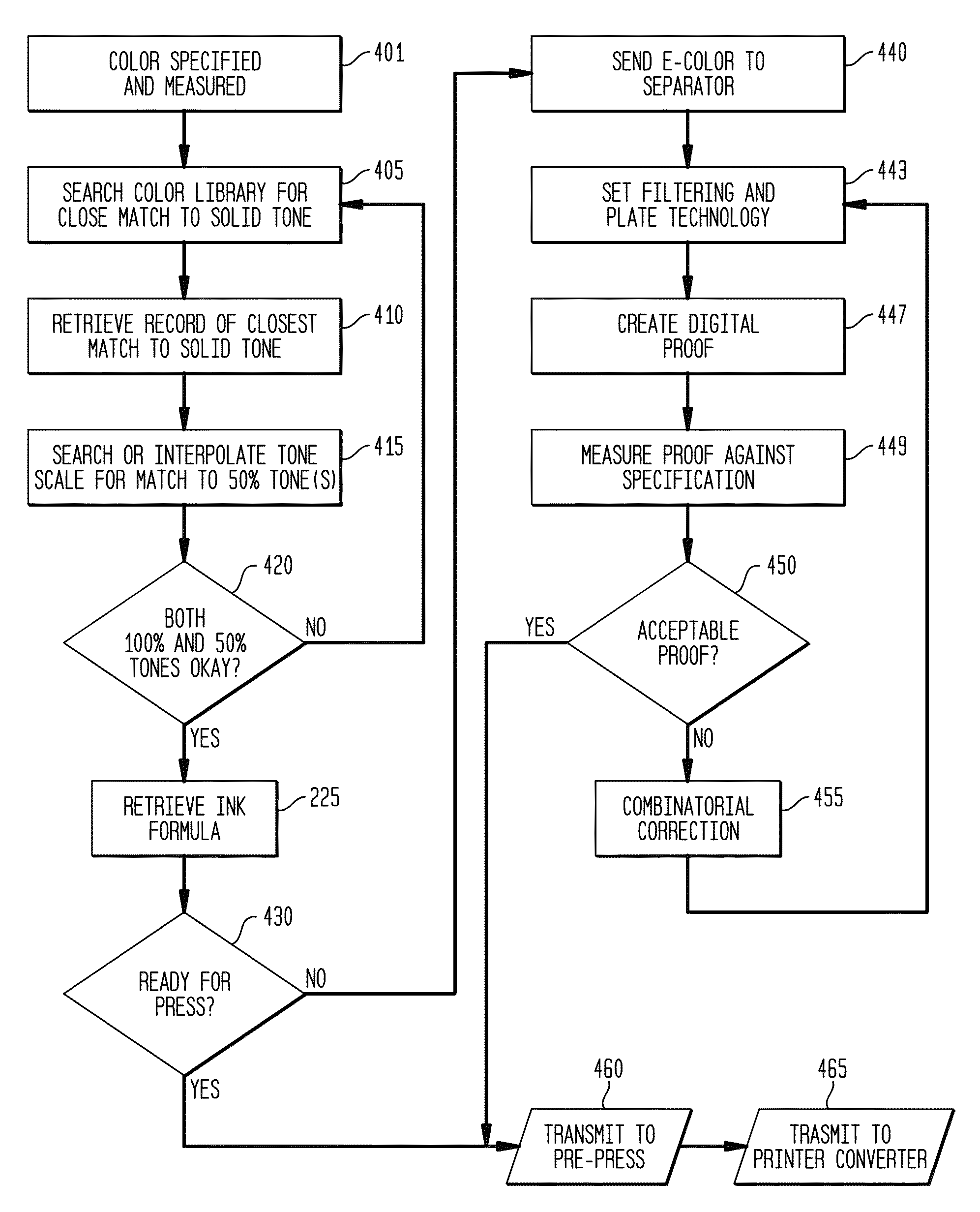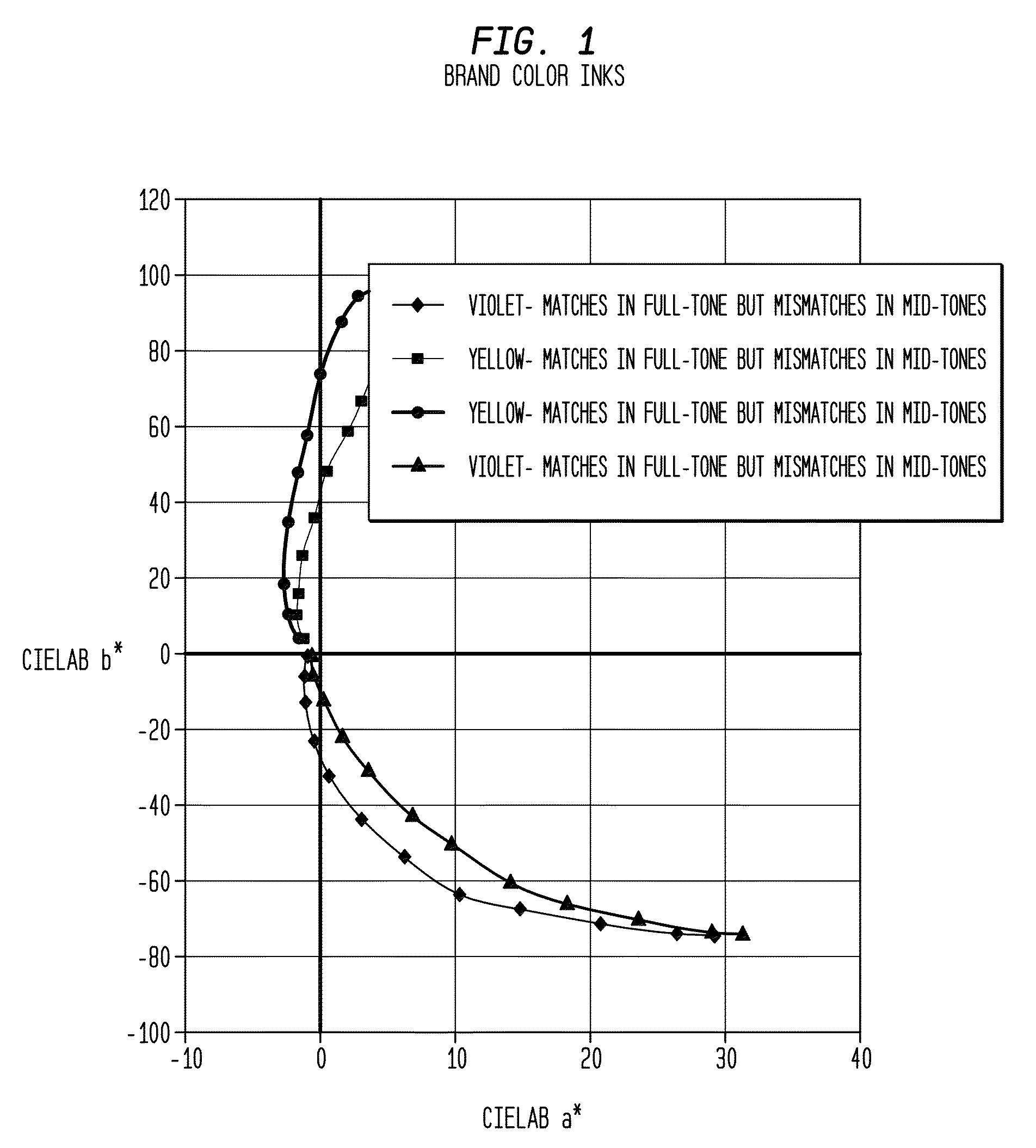Automated ink color matching of solids and tones
a color matching and ink technology, applied in the field of color ink production, can solve the problems of no longer matching the brand color standard, conventional systems and methods have not attempted to match the colors of the tone steps of spot colors, and the assumption fails
- Summary
- Abstract
- Description
- Claims
- Application Information
AI Technical Summary
Benefits of technology
Problems solved by technology
Method used
Image
Examples
Embodiment Construction
[0033]In exemplary embodiments of the present invention, a color shade library or palette with both full tones (solids) and halftones can provide the means of finding a unique combination of colorants and ink film weight that can, for example, provide an optimum match for an entire tone scale, printed using a specified printing technology onto a specified substrate.
[0034]In general, in the development of custom SPOT color inks, there will be only a single combination of pigments that will produce the correct color for both the solid tones and for halftones intermediate between the full tone and the unprinted substrate. These multiple colorant combinations produce a unique spectral signature which leads to the combined behavior of solid color and halftone color. The failure of prior art reproduction schemes results from the fact that mapping the colorimetric or trichromatic properties which as can be seen in the figures produce strongly nonlinear behaviors.
[0035]For example, FIG. 1 d...
PUM
 Login to View More
Login to View More Abstract
Description
Claims
Application Information
 Login to View More
Login to View More - R&D
- Intellectual Property
- Life Sciences
- Materials
- Tech Scout
- Unparalleled Data Quality
- Higher Quality Content
- 60% Fewer Hallucinations
Browse by: Latest US Patents, China's latest patents, Technical Efficacy Thesaurus, Application Domain, Technology Topic, Popular Technical Reports.
© 2025 PatSnap. All rights reserved.Legal|Privacy policy|Modern Slavery Act Transparency Statement|Sitemap|About US| Contact US: help@patsnap.com



